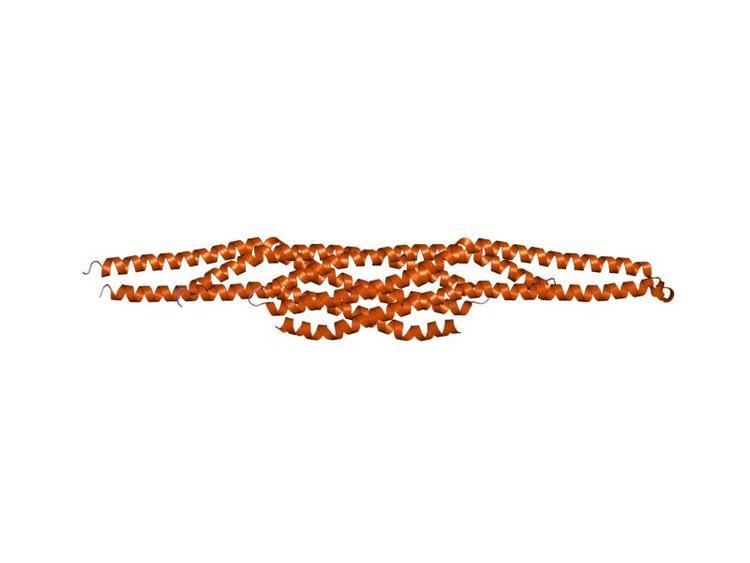Symbol IMD Pfam clan CL0145 Pfam structures | Pfam PF08397 InterPro IPR013606 PDB RCSB PDB; PDBe; PDBj | |
 | ||
In molecular biology, the IMD domain (IRSp53 and MIM (missing in metastases) homology Domain) is a BAR-like domain of approximately 250 amino acids found at the N-terminus in the insulin receptor tyrosine kinase substrate p53 (IRSp53/BAIAP2) and in the evolutionarily related IRSp53/MIM (MTSS1) family. In IRSp53, a ubiquitous regulator of the actin cytoskeleton, the IMD domain acts as conserved F-actin bundling domain involved in filopodium formation. Filopodium-inducing IMD activity is regulated by Cdc42 and Rac1 (Rho-family GTPases) and is SH3-independent. The IRSp53/MIM family is a novel F-actin bundling protein family that includes invertebrate relatives:
The vertebrate IRSp53/MIM family is divided into two major groups: the IRSp53 subfamily and the MIM/ABBA subfamily. The putative invertebrate homologues are positioned between them. The IRSp53 subfamily members contain an SH3 domain, and the MIM/ABBA subfamily proteins contain a WH2 (WASP-homology 2) domain. The vertebrate SH3-containing subfamily is further divided into three groups according to the presence or absence of the WWB and the half-CRIB motif. The IMD domain can bind to and bundle actin filaments, bind to membranes and interact with the small GTPase Rac.
The IMD domain folds as a coiled coil of three extended alpha-helices and a shorter C-terminal helix. Helix 4 packs tightly against the other three helices, and thus represents an integral part of the domain. The fold of the IMD domain closely resembles that of the BAR (Bin-Amphiphysin-RVS) domain, a functional module serving both as a sensor and inducer of membrane curvature. The WH2 domain performs a scaffolding function.
